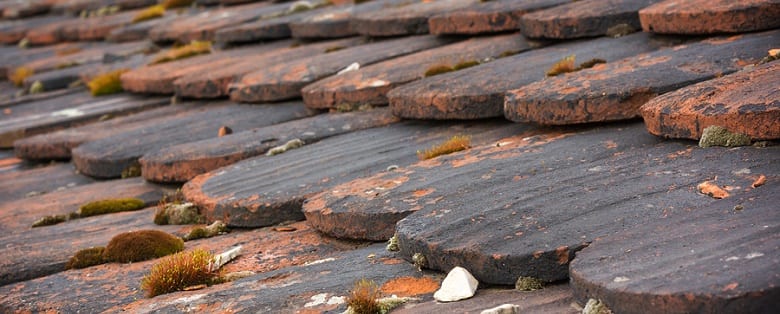
Roofs are easy to take for granted since homes and other buildings simply would not function as such without… a roof! The roofs of today are nothing like what they were thousands of years ago, however, when ancient man first figured out how to build a shelter, then put a roof on it. Over time, roofing has evolved from materials found in nature, to the inclusion of various manufactured materials that are used today.
Even though a residential roof installation on any home may use more modern materials, the basic idea of putting a roof over a structure to protect it is the same as it always has been!
The Earliest Roofs
Although there is evidence that cavemen used sod and vegetation to protect their shelters from the elements, the first actual roof was not used until around 40,000 BC in Siberia. There, shelters covered with the skins of wooly mammoths have been discovered, and this is thought to be one of the first instances of an actual, separate roof being used on a shelter to protect it.
Interestingly, it would not be until about 100 BC that the Romans would begin using slate and tile roofs, but even then the rest of the world was still using animal skins and other natural materials to cover their shelters and homes. Thatch roofs came about around 735 AD, and for hundreds of years, they were used by many cultures and civilizations all over the world until the invention of shingled roofs about 300 years later.
The First Shingled Roofs
The first roofing shingles appeared around 400 AD in Europe, and as time went on they slowly began to replace thatched roofs in many civilizations. Shingles were a major development in the progression of roofing and roof technology and were the main idea that carried roofing history through to the present day.
The Further Development of Roofing Materials in the 12th Century
By the 12th Century in Europe, shingles were being constructed from various materials, with clay becoming a favorite. Clay tiles became so preferred and popular that they were even made a legal requirement in London, where all remaining thatched roofs and other types of roofing were replaced with clay tile.
During this time period, vast improvements and innovations in roofing materials occurred in England and Europe, led by the English and the Romans who continued to develop improved roofing ideas.
A major accomplishment developed by the Romans and used by them and the Greeks were imbrex and tegula tiles, the first interlocking clay tiles that produced a waterproof roof.
Present Day Roofing
Roofing materials continued to advance, with the first industrial produced clay tiles appearing in the 19th century. By this point, different types of clay tiles were perfected, and their use became even more widespread. Wood shakes and shingles of all types were also still in use, and by the end of the 19th Century asphalt shingles were invented. Asphalt shingles greatly changed the process of residential roof installation, offering more cost-effective, easy to install options for efficient roofing. Within the last 200 years, metal has also become a favorable option in roofing material.
Although roofing material has changed somewhat throughout history, the basic principles of using the natural materials that are available still hold true. Clay, slate wood and metal are still used today on many roofs all over the world, as are the more modern inventions like asphalt shingles, plastic, solar and other roofing materials. In comparison to the earliest civilizations with their mammoth skins and thatched roofs, homeowners today now have a wide choice in materials for their residential roof installation.
